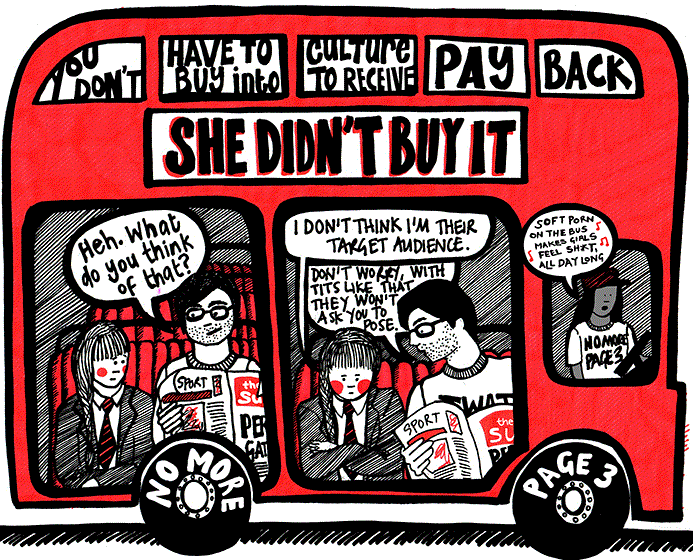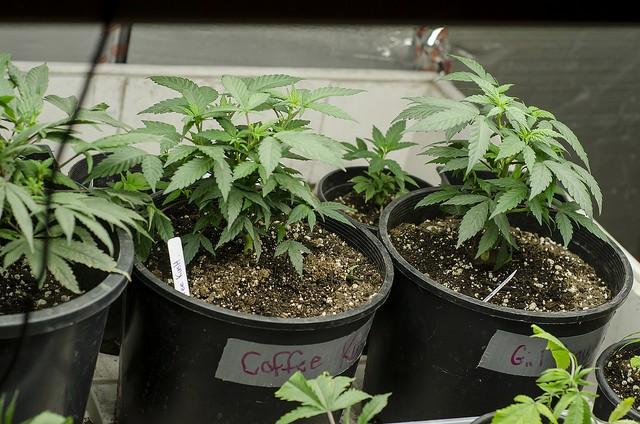VW on Track to Meet 2018 'Think Blue. Factory.' Sustainability Goals


From the boardroom and executive suite through the ranks of management, down to the factory floor and across its global network of dealers and suppliers, Volkswagen AG (VW) has been at the forefront of auto industry efforts to make ecological sustainability and social responsibility a strategic motivating force.
On Nov. 18, VW announced that its 'Think Blue. Factory.' environmental sustainability program is on track for success. Per Think Blue. Factory's targets, a total of some 5,000 individual measures are to be taken by 2018 as VW aims to reduce energy and water consumption, as well as waste, carbon dioxide (CO2) and solvent emissions, across all its factories 25 percent.
VW has already carried out more than 2,700 environmental sustainability projects at its factories, resulting in production processes that are 17 percent “more environmentally compatible over the past three years," according to a team of more than 250 environmental experts that conducted an interim evaluation of VW's ecological sustainability program.
A few days later, on Nov. 21, VW Group announced that it would invest €85.6 billion (~US$106.46 billion) to develop “new models, environmentally friendly technology and production facilities over the coming five years.” Around two-thirds of the total will be invested in developing “increasingly efficient vehicles.
"We will continue to invest in the future to become the leading automotive group in both ecological and economic terms – with the best and most sustainable products," Prof. Dr. Martin Winterkorn, VW AG chairman of the Board of Management, stated during an address at VW headquarters in Wolfsburg, Germany.
Taking the long view
VW is taking a gamble -- and a long-term, 'triple bottom line' view -- of its business in raising environmental sustainability and corporate social responsibility to the level of strategic priorities. Providing a forewarning, as well as a rallying call, to employees, investors and other stakeholders, Dr. Winterkorn said: “Development costs will remain high in the future as a result of high innovation pressure and increasing demands on the automotive industry from CO2 legislation.”
VW will maintain its capex ratio at “a competitive level of between six and seven percent” over the course of the 2015-2019 period. “For us efficiency means not least that capex in the Automotive Division will remain at the same level over the entire planning period – despite increasing demands and the additional growth we have planned,” he stated.
Celebrating “Think Blue. Factory. Day” at its Wolfsburg headquarters, Thomas Ulbrich, member of the Board of Management of the Volkswagen Passenger Cars brand responsible for production and logistics stated:
"'Think Blue. Factory.ʼ is and remains the approach we have adopted to achieve the sustainability targets we have set ourselves for production and logistics at the Volkswagen Passenger Cars brand by 2018. I am very pleased to see how effectively the methods and processes we have developed together are now being put into practice at our locations.”
"Our employees have breathed life into the ‘Think Blue. Factory.' Program and implemented it with considerable commitment right from the outset,” added Prof. Werner Neubauer, member of the Board of Management of the VW Passenger Cars brand responsible for components. “This explains the successes that we have already achieved."
*Images credit: Volkswagen AG
Healing After Typhoon Haiyan Through Basketball


Editor’s Note: This post is part of an ongoing student blogging series entitled The Business Of Sports & Sustainability. This “micro-blog” is the product of the nations first MBA/MPA certificate program dedicated to sustainability in the sports industry. You can follow the series here.
By Ny-Ann Nolasco
On Nov. 8, 2013 Typhoon Haiyan made landfall in the Philippines with winds reaching 280 kilometers per hour (175 mph). It was not only the 30th storm to hit the country in 2013 alone, but it was also the strongest storm recorded. More than 6,300 of our people, our teammates, died. People who’ve never heard of climate change are now all too aware of its impacts. Nearing the first anniversary of this catastrophic disaster, I would like to remember the lives lost and the role of basketball in rebuilding lives.
Shaquille O’Neal, then center for Los Angeles Lakers, jersey #34, came to visit the Philippines in 1997 and was quoted as saying that he found no other place in the world who loved basketball as much as Filipinos do. And it’s true; it has always been both a pastime and an obsession. Basketball is something Filipinos do without a court, without being taught the rules of the game, or a care if they’re any good at it. Basketball is a part of life. Basketball hoops are one of the few items that will never reach landfills in the Philippines because there is always someone ready to take a free hoop. If none is available, any circular object that resembles a hoop will do. Even wire hangers are sometimes reshaped and repurposed as basketball hoops.
In recent years, basketball has also become a forum for healing, bringing laughter and glee in the wake of a lineup of worsening natural disasters. It surprises foreign journalists such as Todd Pittman, who wrote in "Signs of life amid misery reveal Filipino’s spirit" that basketball hoops are usually one of the first, if not the first, structure to come up after a storm. Pittman writes, “As a foreign correspondent working in the middle of a horrendous disaster zone, I didn't expect to see people having a good time — or asking me to play ball. I was even more stunned when I learned that the basketball goal was one of the first things this neighborhood rebuilt … It took a moment for me to realize that it made all the sense in the world.”
It didn’t take more than a few days after Typhoon Haiyan dissipated before players and bystanders were willingly distracted from the violent scene that surrounded them, with basketball serving as an anesthetic to the shock of loss and devastation. Perhaps it was just a momentary anesthetic, but the cheers and disappointment for missing a basket is nonetheless genuine. Basketball continues to be a part of life in the Philippines -- as the numbness wears off, as the community moves on, as life begins a new set of daily routines. In all of this, basketball plays a different role at different times, but it is always played.
Today, people like Geraldine Bernardo, previous captain of the Philippine National Dragon Boat Women’s Team, uses sports like basketball to help heal communities that have fallen victim to Typhoon Haiyan. She collaborates with professors, local sports psychologists, International Emergency and Development Aid, and mentors from University of Tennessee’s Center for Sport, Peace and Society to launch R3 (RePLAY, ReLIVE, and ReNEW). The sustainability of their program goes beyond financial aid; “it aims to get communities that were affected by the typhoon involved in sports so they can have fun, move beyond their hardship and loss, and find a moment’s peace, feeling unified under a single, simple goal: play ball”, writes Nicole Blades in her article "After Disaster, Geraldine Bernardo Works to Prove that Sports Can Heal Communities."
Typhoon Haiyan cost the lives of over 6,300 Filipinos and over $14 billion in economic damage. According to a study conducted by the United Nations University Institute for Environment and Human Security and the German Alliance Development Works, the Philippines is the third most vulnerable country in the world when it comes to climate change. My country can literally disappear from the map. The story of resiliency within the Philippines as epitomized through basketball is one of the most compelling stories of the power of sports to help heal. But it is not a sustainable story. It’s time to look ahead to get beyond healing and rebuilding. Climate change is happening, and there is a call for mitigation from the leaders of the Philippines and the rest of the world. It’s a cliché but true: This is not a game we can afford to lose.
Image credit: Flickr/DFID
Ny-Ann is a dual-degree MBA/MPA candidate at Presidio Graduate School. Her experience in heavily regulated products and services within the healthcare, education and financial industry feeds her passion for sustainable process design that engages both the public and private sector.
U.K. Supermarkets Change Newspaper Display Stands After Social Media Protests


No More Page 3 invites users to submit artwork to protest retailers' newspaper displays
Video: Judith Weisinger of Mills College Talks Diversity at Net Impact '14


"Given all of the corporate crises [we've seen] over the past several decades, it's important for businesses to step up and emphasize ethics and socially responsible leadership," Judith Weisinger, associate professor of business at Mills College, said at the 2014 Net Impact conference in Minneapolis last month.
"The demographics suggest that the nation is becoming increasingly multicultural, and the nexus between business and society is ever-increasingly important. Therefore, an emphasis on diversity is really imperative," she continued. "It's not really an option anymore."
As part of our Talking Diversity video series, Weisinger goes on to explain how diversity matters at the Mills College Lorry I. Lokey Graduate School of Management, where she teaches the new generation of business leaders, in this 90-second clip.
Judy Weisinger is Associate Professor of Business at the Lorry I. Lokey Graduate School of Management at Mills College in Oakland, California. Judith teaches in the areas of leadership & ethics, organizational behavior, and human resources management, and has taught management courses at the undergraduate, graduate and executive levels. She has also consulted to various organizations on topics such as team-building and diversity & inclusion. She conducts research on organizational diversity, with current interests in the role of social networks in the effective management of diversity & inclusion and has emergent interests in diversity and social capital in social enterprises.
Renewable Energy 'Poop Bus' Begins Operating in the U.K.


Here’s a new renewable energy twist on the old bumper sticker — circa the 1970s oil crisis — “Eat More Beans, We Need the Gas!" Take the “Poop Bus!”
Today, that’s not so silly or outlandish, because public transport powered by human waste and sewage could be coming to a bus stop near you before too long. In fact there's one operating now in the U.K. on a trial run basis.
Billed as the “next big trend in sustainable energy,” according to The Guardian, the U.K.’s 'Bio-Bus' runs entirely on biomethane gas generated through the treatment of sewage, as well as food waste that's unfit for human consumption. The waste and sewage is treated at a plant run by the recycling and renewable energy company GENeco. The 40-seat Bio-Bus can travel up to 186 miles on one tank of gas, which takes the annual waste of around five people to produce.
Also known as the 'poop bus,' it is run by Bath Bus Co. and began operating on Monday on the A4 service between Bath and Bristol Airport.
Collin Field, engineering director at Bath Bus, said: "Up to 10,000 passengers are expected to travel on the A4 service during the four-week trial period, which is available not only for airport travel, but also local journeys along the route through Saltford, Keynsham, Brislington, Knowle and Hengrove.”
In a press release, GENeco general manager Mohammed Saddiq said the Bio-Bus “is actually powered by people living in the local area, including quite possibly those on the bus itself.”
Biomethane has been around for some time and, bodily function jokes aside, is viewed as a legitimate source of renewable energy. In 2009, the city of Oslo, Norway converted 80 public buses to run on biomethane. And some European countries, like Sweden, have been using biogas to power vehicles for years.
So, if you are going to overeat this holiday season, take some comfort (and Tums) in knowing that someday you might just aid the renewable energy cause.
Image credit: The Bio-Bus from the Bath Bus Co. site
General Mills Announces New Water Conservation Efforts


General Mills Chairman and CEO Ken Powell declared the company's commitment to water conservation at the the Nature Conservancy (TNC) Global Water Summit in Chicago last week. Powell talked about the company’s efforts of “uber-collaboration" with stakeholders to improve watersheds around the world. General Mills aims to preserve freshwater supplies in particular.
"As a food company, food security is important to us, and we're tied tightly to nature," said Powell in a statement. "We know that without healthy water for land, ecosystems and wildlife, agriculture simply does not work. Businesses languish. Economies falter. People suffer."
General Mills released a new water policy last week, which includes the company’s direct operations and its suppliers. It is committed to ensuring that its direct operations don’t “encroach on the human right to water and sanitation in the communities in which we operate,” according to the policy. To accomplish this, the company is setting targets for wastewater discharge, and if needed it will treat its wastewater internally before releasing it to the environment. It is committed to engaging its suppliers when it comes to water stewardship to “set clear expectations” for them to comply with all environmental laws and provide a safe and healthy workplace for their employees.
Powell also announced that General Mills signed The CEO Water Mandate, launched in 2007 by the United Nations. A public-private initiative, it assists companies in the development, implementation and disclosure of sustainable water policies and practices. Endorsers recognize that they a responsibility to make managing water resources a priority. They also recognize that they can contribute to the U.N. Global Compact’s vision and realization of the Millennium Development Goals.
Water resources management is not new for General Mills. It has been working with TNC since 2010, and through its partnership with the organization it has established a global water risk assessment of all of its growing regions and plants. Earlier this year, the company joined the Alliance for Water Stewardship (AWS) as a founding partner. AWS is a multi-stakeholder organization dedicated to water conservation. It helps members engage key stakeholders within their supply chains and watersheds.
Water conservation is equally important
Water reduction is also important to General Mills, and water reduction efforts are detailed in its Global Responsibility Report 2014. This includes specific examples such as installing recirculation valves at its plant in Murfreesboro, Tennessee last year, which saves over 375,000 cubic meters of water annually. Another example is the replacement last year of a water cooling system in its Häagen-Dazs location in Arras, France with a new chilling system. The system saves between 750 and 1,500 cubic meters of water a year.
Image credit: General Mills
What Defines a Social Innovator Anyway?


By Maura Dilley
Conferences that explore emerging thought leadership are an enjoyable place for a cultural ethnographer. We understand the world through common language, metaphors and reference points. When you’re making something new, like social innovation, you invite an intellectual struggle to organize ideas in our collective mind. Results being the occasional euphoria of a new idea, as well as the confusion of speaking at crossed purposes. The spectrum of self-identified social innovators on parade at the Social Innovation Summit Silicon Valley 2014 gives up much for study.
Understanding the spectrum of self-identified social innovators
First, we have “social innovation natives” like Kiva, Code for America and DonorsChoose.org. In my mind, these organizations define social innovation; they are dedicated to designing products, services and, indeed, companies that fundamentally improve society by re-designing its operating systems. Social innovation is their modus operandi. And there “social innovation re-modelers" -- companies, foundations and philanthropists very large and somewhat small, drawn to identify with social innovation for a variety of curious reasons. Parsing these out was an entertaining exercise.
Sometimes the natives and the re-modelers work together well. Like Premal Shah, president of Kiva, sharing his trailblazing story developing the field of microloans with the organization. And Kiva’s partner, HP, which identified its role in this cause as financial and resource support for Kiva’s work.
But in the social innovation re-modelers category, there were a few too many folks misunderstanding social innovation as a marketing platform. The clear winner in this category is Genworth, the company that brought us Rob Lowe and a public service message on planning for the future, but failed to connect its work to the very robust opportunity for social innovation within elder care (read more here.) We also heard from consumer goods startup Hint Water, whose claim to disruption is … disrupting ecosystem services by producing more single-use plastic bottles? And not to be forgotten, the disingenuous claim to social innovation by way of connecting under-privileged communities with knowledge from Comcast, leading lobbyist against net neutrality.
Why are corporations exploring social innovation?
Looking across the corporate and public companies turning up at the Social Innovation Summit, the motivation for their participation begs examination. There are a few common threads that run under the surface of what was on display. Social innovation often times disrupts heavy, incumbent systems, revealing new efficiencies that are beneficial for anyone, be it gaining energy and material efficiency as Patagonia has done or labor efficiencies like inventing a family flex-time policy.
Cutting edge of market opportunities are another reason. Take American Express’ work extending financial services to under-banked customers. Financial services for middle and upper class abound, so American Express’ market can only grow if they reach out to the unbanked. American Express, oddly absent at SIS but a good example nonetheless, needs to develop products and services that are appropriate for its under-banked clients. Amex even made a movie about its work! Capitalizing on the business opportunity to provide these products and services requires an exercise in social innovation.
How about strategic supply chain management: Corporations might share the awareness that economic instability leads to disruptions in the supply chain, which impacts operation costs. A desire to improve supply chain security might lead to community economic development investment in resource markets.
And last but not least: attracting and retaining creative talent with passion and drive. Hacking social problems is interesting, compelling work. It connects creative people to a meaningful and motivating causes that make them want to go to work. Here we’ve finally arrived at the question: What does the level and quality of engagement with social innovation say about a company?
Social Innovation ≠ Marketing
As corporations leverage the social innovation toolbox to through the lens of brand, it is not without consequence. This work is about building platforms and capacity that, once built, take on a life and determination of their own.
Social innovation is undersold when it’s introduced as marketing and used interchangeably with corporate social responsibility (CSR). CSR can be good philanthropy, but don’t look to a CSR department for transformational systems change -- the likes of which we need to truly tackle our world’s wicked problems. Social innovation means permanent and irrevocable disruption. It is not marketing; it is a mindset and a practice of business for good, which grows to the limits of the limits of creativity and passion.
DonorsChoose.org, Kiva and Code for America have done tremendous work to achieve real impact, the relative scale and spirit of which is a gap to close for social innovation re-modelers. They may have bought a place on the stage, but the glory can only be earned.
Image courtesy of the Social Innovation Summit
A True 'Plug-and-Play' PV System is Closer Than You Think


Back in the spring of 2012, the Energy Department announced a $5 million, five-year initiative aimed at producing a true rooftop 'plug-and-play' photovoltaic system, meaning a solar panel that you could pick up at your local building supply store, plant on your roof, and have it soaking up the photons all within the same day.
The concept of a solar appliance that is just as easy to install as any other appliance sounds reasonable enough, but the residential and small business solar market faces a unique set of obstacles. We've been covering plug-and-play PV developments since at least 2009, and generally speaking they still involve more time and effort than, say, installing a new fridge.
That's partly because retail solar systems are relatively new. Standardization is just beginning to emerge, and in the meantime solar customers have to put a lot of elbow grease into the process.
Contrast that with the rest of the retail appliance industry: It is a mature field with a firm platform of standardization, which accounts for why you can buy practically any kind of new stove from just about anywhere without having to think about getting special permits or making other special arrangements.
With that in mind, let's take a look at a new plug-and-play system, developed by the Fraunhofer Center for Sustainable Energy Systems (CSE) with funding from the Energy Department's SunShot Initiative, and see how close we are to a true plug-and-play system for solar.
A true plug-and-play PV system
CSE launched its new plug-and-play PV system publicly for the first time last week. The target installation time for the commercial version will be about 10 hours. With the advantage of in-house expertise (and presumably, plenty of practice), the CSE team was able to install and commission a full-scale system in just a tenth of that time.
The design of the system specifically targets 'soft costs,' including interconnection with the local grid, permitting and inspection, as well as the processes of purchasing and installation.
The grid connection presented a particularly cumbersome obstruction that required the cooperation of multiple stakeholders to sort out satisfactorily, including Boston, Dartmouth and Falmouth, among other Massachusetts municipalities, as well as National Grid, Northeast Utilities, Green Mountain Power and other utilities serving the Northeast.
The solution is an automatic, pre-certified system that provides for grid integration via a simple email (more details are available here).
So far, so good. The plan for next year is to develop a plan for manufacturing the system at commercial scale. CSE intends to demonstrate a commercial-ready system next year, which puts it on track for fulfilling the Energy Department's five-year plan.
What your local utility hopes to gain from plug-and-play PV
The end goal is to transform PV ownership from a hassle into a simple bottom-line choice for electricity consumers.
All else being equal, that would certainly accelerate the the growth of the distributed solar energy sector. Distributed generation has already begun to create huge challenges for conventional utility companies, but the CSE collaboration illustrates how utilities can adapt to the new landscape.
CSE's focus on simplifying grid connectivity is the key. By making a grid connection inexpensive and seamless, the CSE plug-and-play system provides a good incentive for consumers to buy a PV system without making an additional investment for on-site energy storage.
The senior vice president and chief customer officer at Northeast Utilities, Penni Connor, summed it up like this:
"These systems make solar adoption a less complicated and time-consuming process for our customers and easier for us to bring new solar onto our systems. Our customers are going to have easier access to solar, helping us support a more sustainable energy future."
With a solid base of grid-connected, distributed solar customers, utilities can still focus on distributing electricity and ensuring reliability. In this model, utilities would shift their emphasis from building centralized power plants to building additional energy storage facilities.
As for CSE, last summer it opened its new headquarters in Boston as a "living laboratory" for solar and energy efficiency R&D, which among other projects, houses a pilot fabrication line for solar modules.
Image (cropped): Courtesy of CSE
Video: Tawanna Black of Northside Funders Group Talks Diversity at Net Impact '14


"Simply having diversity does not produce results for the bottom line," Tawanna Black, executive director of Northside Funders Group, said at the 2014 Net Impact conference last month.
"We've known that just mixing people up one way or another doesn't actually produce results -- in fact, sometimes it creates more conflict and more challenges that may hinder business sustainability and growth. But inclusivity does."
The concept of moving beyond diversity to inclusion came up several times in our Talking Diversity video series. In this two-minute clip, Black makes the business case for going that extra step to ensure inclusivity and why it's important to allow employees to bring their "whole selves" to work.
"Americans spend more time at work than anywhere else," Black noted, "so why wouldn't we want [our workplaces] to be places that we enjoy?"
Tawanna is a native of Arkansas City, Kansas. She has a Bachelors Degree of Public Administration from Washburn University. This year she was awarded a prestigious $100,000 Bush Fellowship by the Bush Foundation to engage her transformational leadership toward building equity in the Twin Cities and beyond. In 2004, she was honored by the Jaycees as one of the Ten Outstanding Young Omahan’s. And, in 2005 the Midlands Business Journal honored her as one of Omaha’s 40 under 40.
Tawanna has lent her leadership to over 30 nonprofit and philanthropic boards over the last decade. She currently serves as President of the Minneapolis-St. Paul Chapter of The Links, Inc., Trustee at the Women’s Foundation of Minnesota, Board Chair of Youthprise, and Co-Chair of the African American Leadership Forum. Tawanna and her husband Eric live in the Twin Cities with their children Traviata (3 years old) and Christian (1.5 years old).
Boulder County Proposes Cannabis Carbon "Tax"


Marijuana farms are growing by leaps and bounds in Colorado these days – and so are the concepts of how to capitalize on this new industry. From cannabis growers' conventions to businesses that build temperature-controlled indoor environments for grass growers, and journalists that rate strains of the new aperitif on their appealing qualities, Colorado’s eastern slope seems to be busting with new ways to harness the impact of this growing industry.
But the new millennia fascination with the herb has also brought some headaches, as Boulder County has discovered over the past year. Located just north of Denver in a valley well known for both its hot, sunny summer weather and its unpredictable storms, Boulder County has become an epicenter of sorts for the New West’s burgeoning industry.
Colorado State Article 18, which went into effect this past January after voters agreed to overhaul the state’s cannabis regulations, allows for both private and commercial growing and use of cannabis within the state. What it didn’t take into account, the county notes, is the carbon emissions that are tied to warehouses with hundreds of thousands of square feet dedicated to hot, bright lighting and plants that normally grow fine outdoors. In hot, sunny climates, that is.
According to one industry source, it takes about 5,000 kilowatt hours of electricity to grow about 2.2 pounds of good-quality pot. Compare that to the bill for an average Boulder home, which takes about 900 kWh to power a rambling 2,400-square-foot house for one month. The very light sources that are used to warm and nurture the plants through mile-high winters are part of the problem, says the county, which has seen electricity usage spike just as enthusiastically as weed sales.
To offset the impact, the county plans to levy a charge of 2.16 cents per kWh. The interesting thing is this isn’t designed to offset the electricity costs – Boulder City and Xcel Energy regulate and charge for the electricity. The county sees this as a carbon tax of sorts that would offset the impact of carbon emissions from cannabis. What is more, city businesses and residents already pay a carbon tax per year for general energy usage.
As to the county’s new grass tax: It isn’t yet clear how the tax will be used, but the county has determined in other research that carbon dioxide levels, as well as pesticide pollution, are a factor in growing marijuana -- whether it is for the fun of getting high, or for pain management through medical marijuana. The county has also stated that its real interest is encouraging growers to reduce energy usage, either through more environmentally friendly lighting choices or other options that reduce emissions.